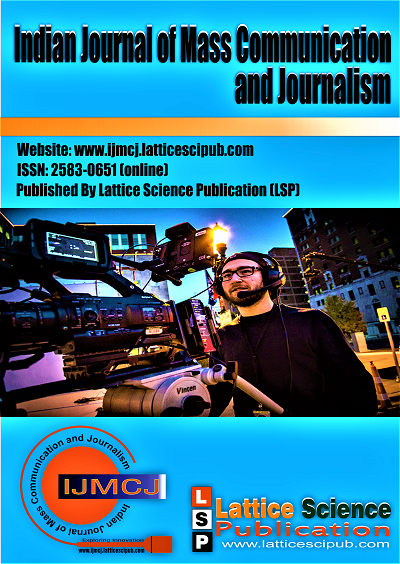Exposing and Creating Nuance in Cinema: A Study on the Representation of Marginalized Identities in Neeraj Ghaywan Films
Main Article Content
Abstract
Being a perception-inducing and reinforcing medium, films can make remarkable efforts to humanize the lives of marginalized identities. Indian cinema has been largely criticized for its upper-caste gaze, sexual objectification of women, gagged or stereotypical representation of minorities, and other cultural identities. Neeraj Ghaywan is necessarily one of the young contemporary filmmakers from Bollywood who, regardless of the status quo, attempts nuance in terms of representation and portrayal. Diversity in the organizational structure of our society should reflect in mainstream cinema narratives to impact the process of democratization. The presence of more filmmakers from diverse identities would energize this process in its due course. This study is designed to analyze the representation of marginalized identities and explore the auteurship of Neeraj Ghaywan. As choosing not to talk about is itself a political act of subversion, under-representation would impact only social exclusion, while misrepresentations might perpetuate and bring about toxic stereotypes. The films of Neeraj Ghaywan are keen on both aspects of faulty representations.
Downloads
Article Details

This work is licensed under a Creative Commons Attribution-NonCommercial-NoDerivatives 4.0 International License.
How to Cite
References
Forlenza, R. (2021). Antonio Gramsci on religion. Journal of Classical Sociology, 21(1), 38–60. https://doi.org/10.1177/1468795X19865119
Fiske, J. (1989). Reading the Popular (1st ed.). Routledge. https://doi.org/10.4324/9780203132111
Wood, J. T. (1994). Gendered media: The influence of media on views of gender. Gendered lives: Communication, gender, and culture, 9, 231-244.
Cabrera Campoy, J. Investig. Fem (Rev.) 8(2) 2017: 445-456
Lozano, F. J. G. (2016). India: radiografía en femenino. Razón y fe, 274(1417), 451-453.
Interview: Director Neeraj Ghaywan on why his job call seeks Bahujan talent. (n.d.). The Wire. https://thewire.in/caste/neeraj-ghaywan-interview-job-call-diversity-bollywood
Shah, B. (2017). The real story of Gauri Sawant, the trans “mommy” from the Vicks video, is even more extraordinary. YourStory.com. https://yourstory.com/2017/04/gauri-sawant
Shankar, P. (2017, October 26). Doms of Varanasi make a living among the dead. U.S. https://www.reuters.com/article/india-doms-varanasi-cremation-idUKKBN1CV1K8
Dom Raja - The Untouchable Gatekeepers of Heaven | Unique Stories from India. (2016, March 31). [Video]. YouTube. https://www.youtube.com/watch?v=F5a4iq2T4xw
Hughey, Matthew W. (2014). "The White Savior Film: Content, Critics, and Consumption". Temple University. p. 252.
Washington, L. (2021, December 13). The importance of representation in film and media https://medium.com/@Laurenwash/the-importance-of-representation-in-film-and-media-2d006149cac9
Caughie, J. (2013). Theories of authorship. Routledge.
Hasan, Dr. S. B. (2022). Ala-ul Mulk: A Political Genius and Confidant of Alauddin Khalji. In Indian Journal of Social Science and Literature (Vol. 1, Issue 3, pp. 5–8). https://doi.org/10.54105/ijssl.c1054.031322
Bashid, N., & Prabha, R. R. (2023). The Portrayal of LGBTQIA+ Community, in Different Religions in India; A Comparative Analysis of Hindu, Muslim & Christian Scriptures. In Indian Journal of Mass Communication and Journalism (Vol. 2, Issue 4, pp. 1–9). https://doi.org/10.54105/ijmcj.c1038.062423
Suman, S. K., Srivastava, P., & Vadera, S. (2019). Age and Gender Influences on Consumer Behavior Towards Online Discounts. In International Journal of Recent Technology and Engineering (IJRTE) (Vol. 8, Issue 2, pp. 5202–5211). https://doi.org/10.35940/ijrte.b1046.078219





